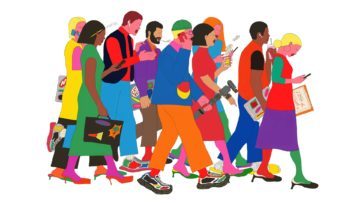David Brooks in The Atlantic:
 The class structure of Western society has gotten scrambled over the past few decades. It used to be straightforward: You had the rich, who joined country clubs and voted Republican; the working class, who toiled in the factories and voted Democratic; and, in between, the mass suburban middle class. We had a clear idea of what class conflict, when it came, would look like—members of the working classes would align with progressive intellectuals to take on the capitalist elite.
The class structure of Western society has gotten scrambled over the past few decades. It used to be straightforward: You had the rich, who joined country clubs and voted Republican; the working class, who toiled in the factories and voted Democratic; and, in between, the mass suburban middle class. We had a clear idea of what class conflict, when it came, would look like—members of the working classes would align with progressive intellectuals to take on the capitalist elite.
But somehow when the class conflict came, in 2015 and 2016, it didn’t look anything like that. Suddenly, conservative parties across the West—the former champions of the landed aristocracy—portrayed themselves as the warriors for the working class. And left-wing parties—once vehicles for proletarian revolt—were attacked as captives of the super-educated urban elite. These days, your education level and political values are as important in defining your class status as your income is. Because of this, the U.S. has polarized into two separate class hierarchies—one red and one blue. Classes struggle not only up and down, against the richer and poorer groups on their own ladder, but against their partisan opposite across the ideological divide.
More here.
